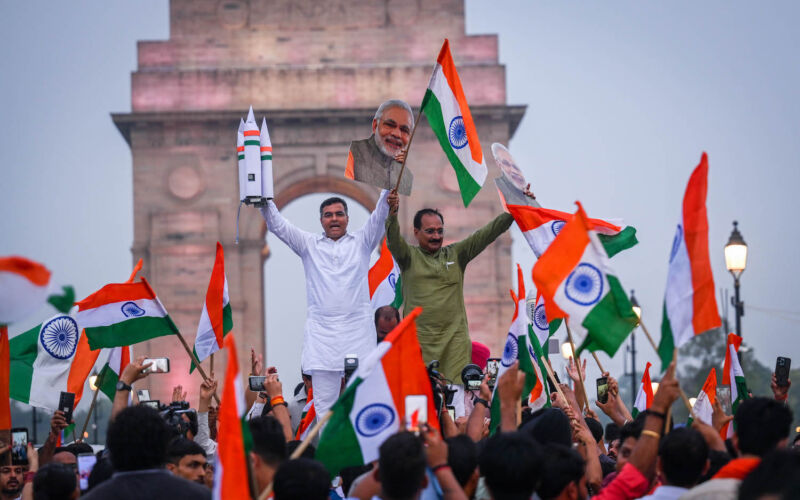

All at once, India’s government has approved plans to develop a new reusable rocket, the centerpiece of an Indian space station, and robotic sample return mission to the Moon, and a science probe to explore Venus.
“Great news for the space sector!” Indian Prime Minister Narendra Modi posted on X. Collectively, the projects authorized by India’s union cabinet will cost an estimated $2.7 billion. Most of the funding will go toward the country’s space station and a reusable launch vehicle.
If the projects reach their goals, the approvals announced by Modi on Wednesday will put India on a trajectory to become the third-largest space power in the 2030s, after the United States and China. V. Narayanan, director of India’s Liquid Propulsion Systems Center, stated this was the objective in a recent presentation, writing that India’s space initiatives will catapult the country to a place “among the three important space powers in the world.”
This suggests India aspires to surpass Russia’s space program, which is experiencing a financial crisis largely due to the country’s war against Ukraine. Russia still has a reliable crew capsule, the Soyuz, and will maintain a robust human spaceflight program as long as the International Space Station remains in orbit. But there are serious questions about whether Russia’s government can support a standalone national space station, a replacement for the Soyuz crew spacecraft, or a heavy-lift reusable rocket.
Aiming high
If India succeeds with its space station and reusable rocket and continues to make progress in lunar and interplanetary exploration, there’s reason to believe the South Asian power will do more in space than Russia over the next 15 years. Europe and Japan do a lot in space, too, but they lack independent human spaceflight programs, and their governments have not taken the step to significantly support the development of a reusable rocket.
As soon as next year, India aims to become the fourth country to launch its astronauts into orbit with the Gaganyaan human spaceflight program. Modi announced in 2018 that India’s Gaganyaan spacecraft would carry astronauts into space by 2022, but the schedule has been delayed three years, with a crew flight now targeted by the end of 2025. Even if this schedule gets delayed again, India is almost assuredly the next country to join the human spaceflight club. There’s no other space agency making a serious effort in this arena.
Last year, India became the fourth country to land a spacecraft on the Moon with the Chandrayaan 3 mission. The lander deployed a small rover to drive across the lunar surface, returning the first detailed measurements of soil composition near the Moon’s south pole. Chandrayaan 3’s landing also set the record for the largest audience for any live event on YouTube, with 8 million users watching as the spacecraft made its final descent.
Perhaps that statistic is not surprising for such a historic event in the world’s most populous nation. Modi, India’s nationalist prime minister since 2014, has closely associated himself with India’s successes in space and has used them as a source of national pride. Chandrayaan 3’s landing on the Moon sparked flag-waving celebrations across India.
“The whole experience was nothing short of a fairytale,” said Pawan Goenka, chair of the Indian National Space Promotion and Authorization Center, a government office acting as a go-between between India’s space agency and the private sector. “The entire country was in a celebratory mood, the kind I have never seen before when India beats Pakistan in a cricket match.”
India has been thrifty in pursuing its achievements in space, which include an independent regional navigation satellite network and a growing military space sector. Chandrayaan 3 cost India’s government less than $100 million, a fraction of the cost of a comparable mission managed by NASA.
ISRO has received roughly $13 billion in funding over the last decade, good enough for eighth place in the world in terms of government investment, according to Steve Bochinger from the space consulting firm Novaspace.
Indian officials know the country’s accomplishments in space, most recently the Chandrayaan 3 landing, have set a high bar for future missions despite economic hardships, extreme income disparities, and limited opportunities for advanced education.
“The success of Chandrayaan 3 symbolizes the new India, ready to make its mark in the global space sector,” Goenka said at India’s National Space Day on August 23. “And this success has put India’s capabilities in space technology in the global spotlight. It has also increased the expectations of our countrymen and the world from India’s space industry.”